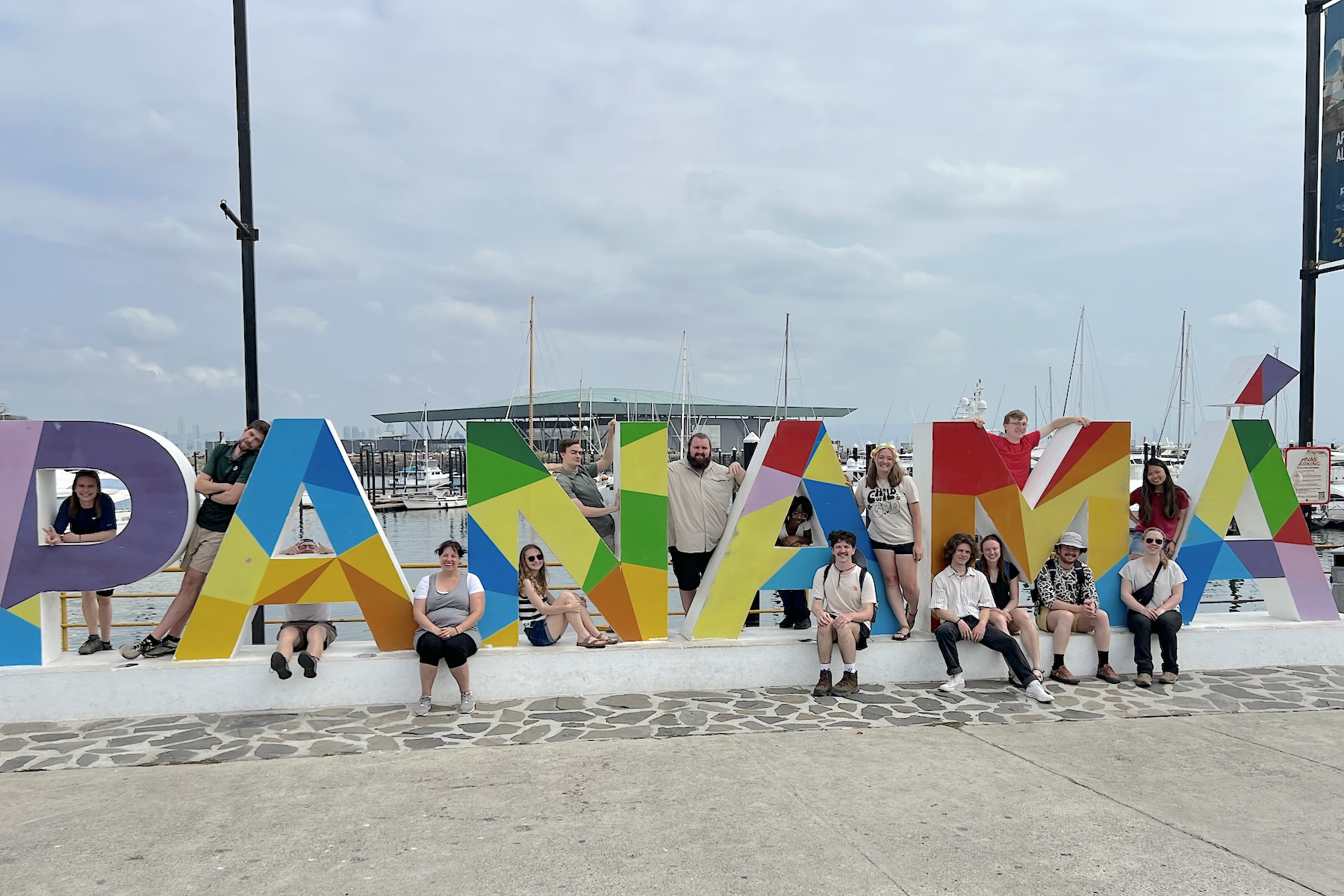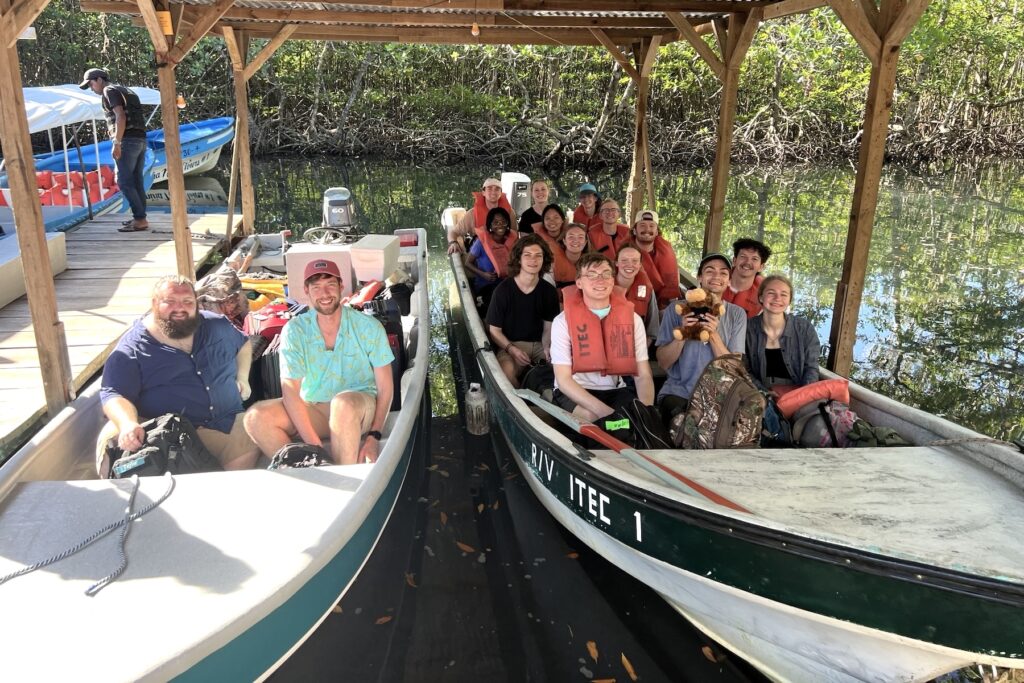While at the ITEC (Institute for Tropical Ecology and Conservation) Bocas del Toro biological station on the island of Colón, they got close to wildlife that a lot of us are accustomed to seeing in a zoo.
According to Associate Professor of Biology and Biology Department Chair Dr. Joni Criswell, this was her first trip taking students out of the country since the COVID pandemic. Panama is a favorite place to take her students, and for good reason.
“Panama holds a special place in my heart because it is where I did all my graduate research for my Ph.D., so it feels like a second home. Like any place that you have a special connection with, you want to share it with others, which is why I love taking students there. I really enjoy taking students to a country whose history is tied to the United States’ history and let them experience one of the most expressive man-made modern marvels of the world—the Panama Canal,” Dr. Criswell said.
While it wasn’t exactly camping, the students were roughing it at the biological station, located on an island accessible only by boat. At the station, electricity was supplied by a generator for limited hours in the day, air-conditioning was non-existent, and the station gathered and purified its own water.
“It was off grid but there were times we had generated power,” said Emily Stanton, an Environmental Science major. “We were running off of rainwater they collected… that’s all the water we had.”
While the experience may have been lacking in creature comforts, there was an abundance of discoveries to be made in the beautifully diverse Panamanian ecosystem.
“Waking up at five in the morning to howler monkeys is crazy” said Casey Blair, a Biology major. “Sometimes they’d be right outside our window… that was kind of the alarm clock to get up.”
“We went snorkeling, we saw fish, some stingrays and I saw a shark. It was a nurse shark, basically pretty safe,” said Dehlia Gambrell, a Nursing major.
The trip to Panama presented Stanton with a lot of firsts.
“I had never been out of the country or flown before,” Stanton said. “My dad had his pilot’s license in high school and college and he explained to me what to expect.”

An avid photographer, Stanton enjoyed the chance to try out her newly-acquired camera gear on the wild beauty that was all around her. (see her photos above)
“We saw a couple of sloths—I didn’t expect us to be able to look up and see them. There was one in a tree we hiked by,” Stanton said. “I do wildlife photography and so I stopped and took some pictures of him.”
A big part of the experience for Gambrell was getting to know her classmates better as they explored Panama.
“With any kind of traveling you get to see how people live in other countries,” said Gambrell. “It’s eye opening… The streets were dirt and gravel. A lot of houses had wood planks and bug nets instead of windows. There were lots of linens and clothes hanging outside probably because of not having washers and dryers.”
Gambrell, who is considering possible work as a travel nurse in other countries, feels that her experience in Panama has been beneficial.
After a few days at the Bocas del Toro biological station, they traveled to the capital, Panama City, whose tall skyscrapers and urban atmosphere were a striking contrast to the rainforest villages and islands. They also traveled into older parts of Panama City.
As cosmopolitan as Panama City may seem, the students noticed a degree of environmental harmony as clusters of tall buildings alternated with green spaces.
“We went to the top of our hotel to watch the sunset and there were all of these skyscrapers around us, and right past the skyscrapers is mountain jungles. You can see the mountains through the gaps in the buildings,” Stanton said.
“The last night… we went on a food tour in old Panama City,” Gambrell said. “We started off with coffee and chocolate. It was coffee beans that can only be grown in a specific part of Panama. The chocolate was made by indigenous people. It didn’t have any milk in it. It was very grainy but it was good.”
“I think it’s always important to get out of your comfort zone. Get out of where you’ve lived and what you’re used to and see other things and experience other cultures,” Blair said. “I think it was really great perspective on life and seeing other places that you wouldn’t regularly go to or other ways of living that you normally wouldn’t come into contact with.”
“Although I always tell students this is an ecotour type trip, I truly like to show them something that the arriving tourist would never experience. This is why I take them to a research station which is only open to research and education. This gives students the opportunity to see wildlife and experience the tropical rain forest in a way that typical travelers will never get to experience,” Dr. Criswell said. “I’ll be honest—taking students on trips like this gives me a wonderful excuse to plan experiences where my family vacations would never go. I enjoy and learn just as much as the students do when I head up study abroad trips.”


